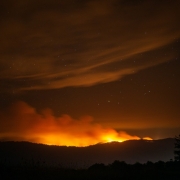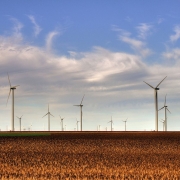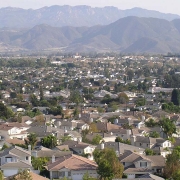Blackouts and Fires: California’s Summer Attractions
In the soft warmth of spring the swallows famously return to Capistrano, but in recent years they are followed by what seems inevitable summer power outages and fires. This is not as pleasant an experience for Californians as the return of our favored feathered companions.
Every summer, usually around this time of year, we get our inevitable heat waves. In the past, we used to endure them without fearing our lights — and computers — would be shut down, and our houses left in ruins.
No more. Almost every year we do not just have a fire season, we have a conflagration. Millions of acres get scorched across the state, accompanied by mass evacuations. Meanwhile, electricity is cut off to millions more, and the state, already reeling from an extraordinary economic decline, with the sixth highest unemployment rate among the states, continues its pell-mell rush into the 12th Century.
Why California Is Burning
As an old newspaper and TV reporter, I covered fires for many years and, in producing documentaries on past California disasters, secured historic footage of devastating fires as late as the 1960s. Yet what has changed is how we respond to natural disasters, often in ways that make them worse.
This is clear with the fires. California’s two last Governors, Jerry Brown and now Gavin Newsom, conveniently blame “global warming” for the massive destruction. But even granting that summer the temperatures have crept up, one would think this would lead to improved management of forests and brush — after all it is science! But the green allies have long stood against the harvesting of dead trees and the aggressive clearing of bush and attempts to do so in 2016 were vetoed by Governor Brown. Money that could have gone for undergrounding electrical lines went instead to green energy schemes.
Overall, the state Legislative Analyst Office found, the fires were less driven by global warming, but by purposeful policies that allowed for the accumulation of fuel, as well a growing development in certain exurban areas, in part as a way to escape the extremely high housing prices along the coast. A 2018 Little Hoover Commission report similarly called for more aggressive forest management in the Sierra, an area that has been devastated in some fires. Last year’s fires cost the state economy $2 billion; we may surpass it this year. These fires are not great for the environment or for reaching the state’s super-ambitious GHG goals: According to the US Geological Service, the 2018 fires emitted roughly as much greenhouse gas as an entire year of electricity generation.
The Electrical Kool-Aide Test
In 1968, Tom Wolfe wrote amusing about hippy movement in the Electric Kool-Aid Acid Test. Today the fodder for the risible has become, at least in California, the politically inevitable. Ever since muscle-bound Arnold Schwarzenegger found climate religion, the state has determined to push the green agenda to its fullest extreme. In a succession of regulatory moves, California has accelerated its detachment not only from fossil fuels, including natural gas, but the most reliable no-emissions electricity, nuclear power.
Yet at the same time as the state has subsidized massive increases in wind and solar power, it has also accelerated plans to electrify everything from home kitchens to buses, trucks and, of course, cars. All this at a time when power supplies are increasingly constrained. Elon Musk can build all the vehicles he wants — increasingly outside California — but how are they going to be powered and at what cost?
Well, we know the cost side all too well. State energy policies have made California gas and electricity prices among the highest in the nation, since 2011 electricity prices have increased five times as fast as the national average. In 2017 alone, they increased at three times the national rate. These prices have been devastating to poorer Californians, particularly in the less temperate interior where “energy poverty” has grown rapidly. This is no fluke; all countries that have adopted draconian “green” mandates — Germany, Demark, even resource-rich Australia — has experienced huge spikes in energy prices. In Europe, notes one study, reliance on renewables both reduces incomes and boosts rates of household poverty.
Read the rest of this piece at Real Clear Energy.
Joel Kotkin is the author of The Coming of Neo-Feudalism: A Warning to the Global Middle Class. He is the Presidential Fellow in Urban Futures at Chapman University and Executive Director for Urban Reform Institute. Learn more at joelkotkin.com and follow him on Twitter @joelkotkin.
Photo credit: National Park Service Photo / Anela Kopshever, in Public Domain





 NREL
NREL Thomas Hawk
Thomas Hawk

 Voice of America, Public Domain
Voice of America, Public Domain